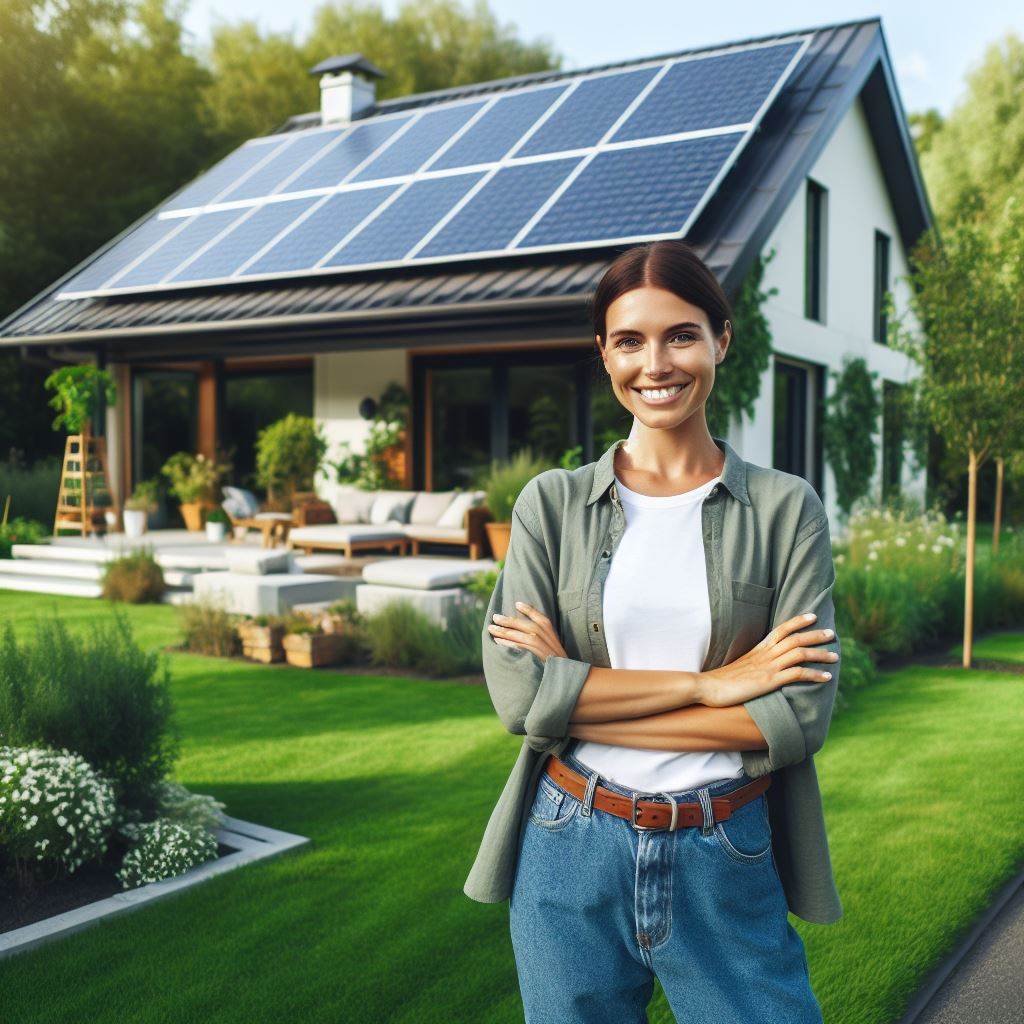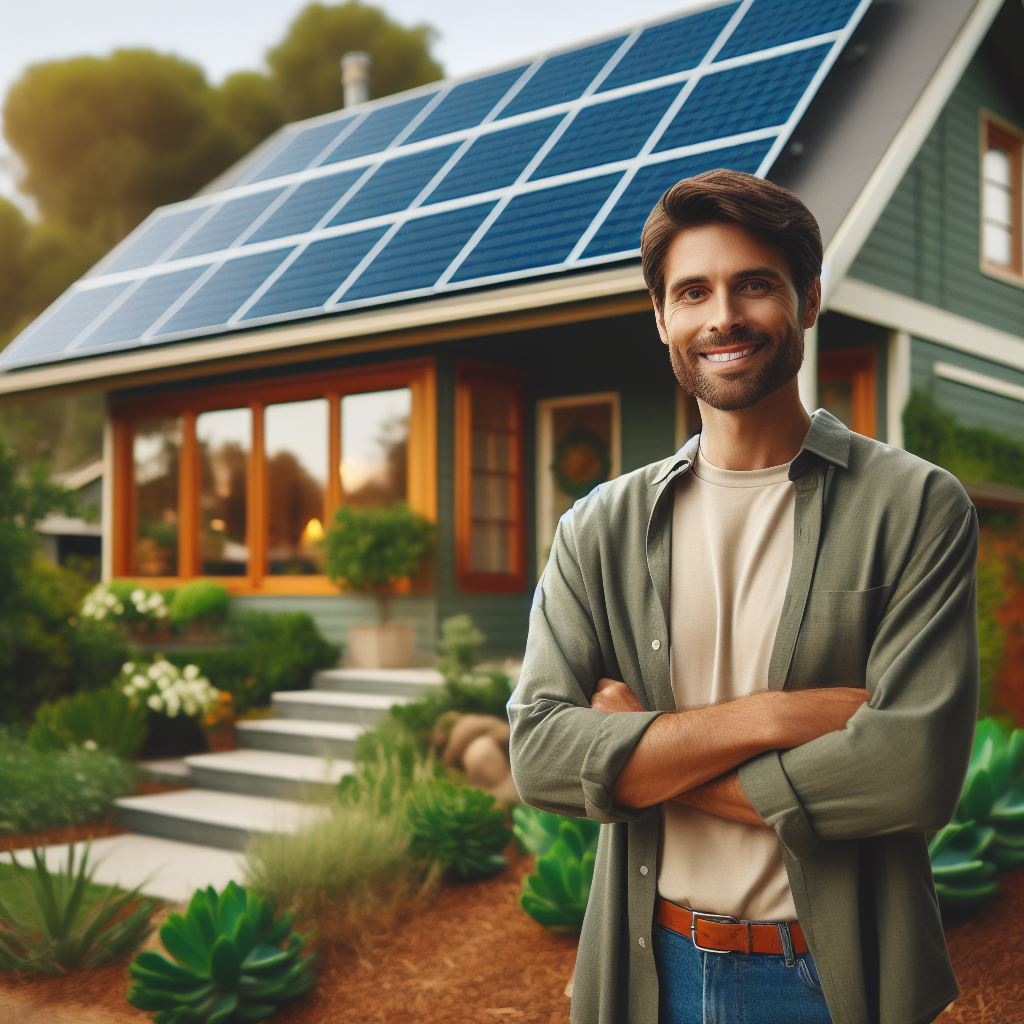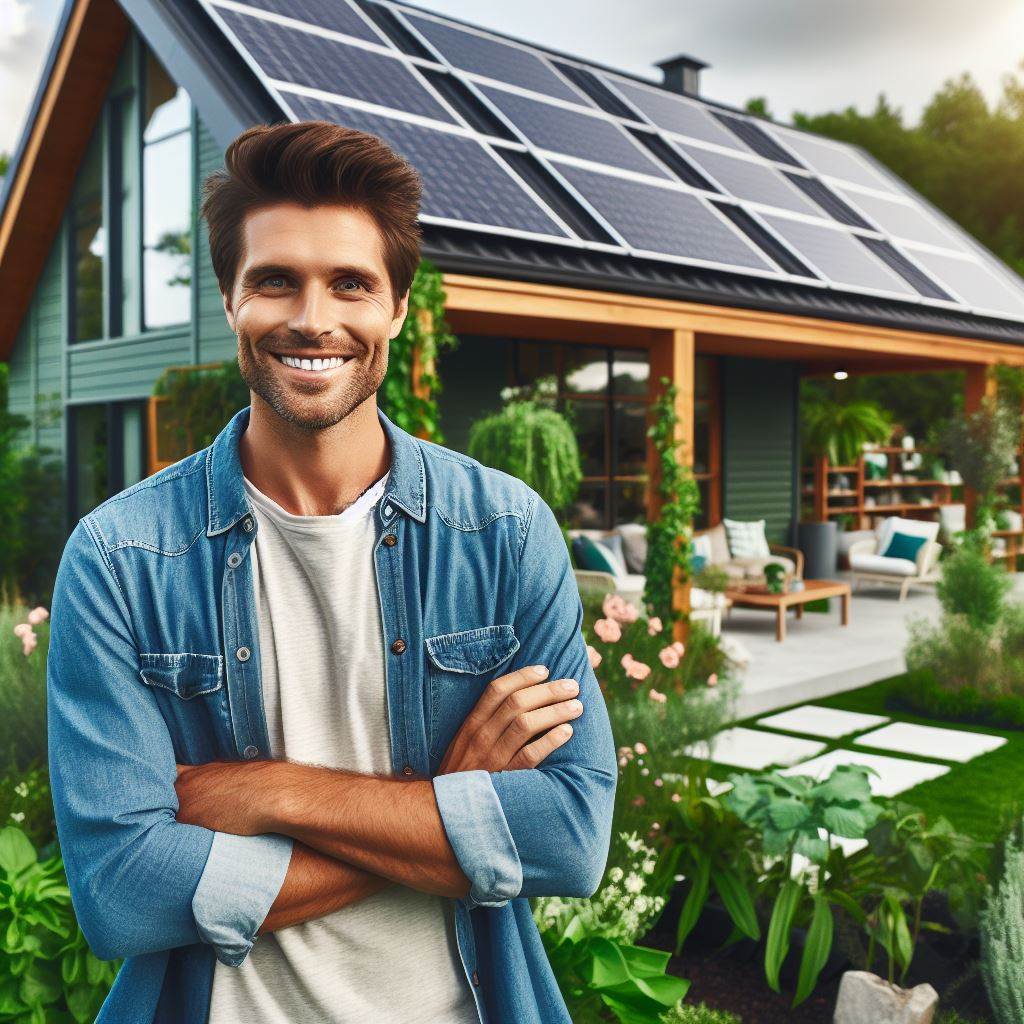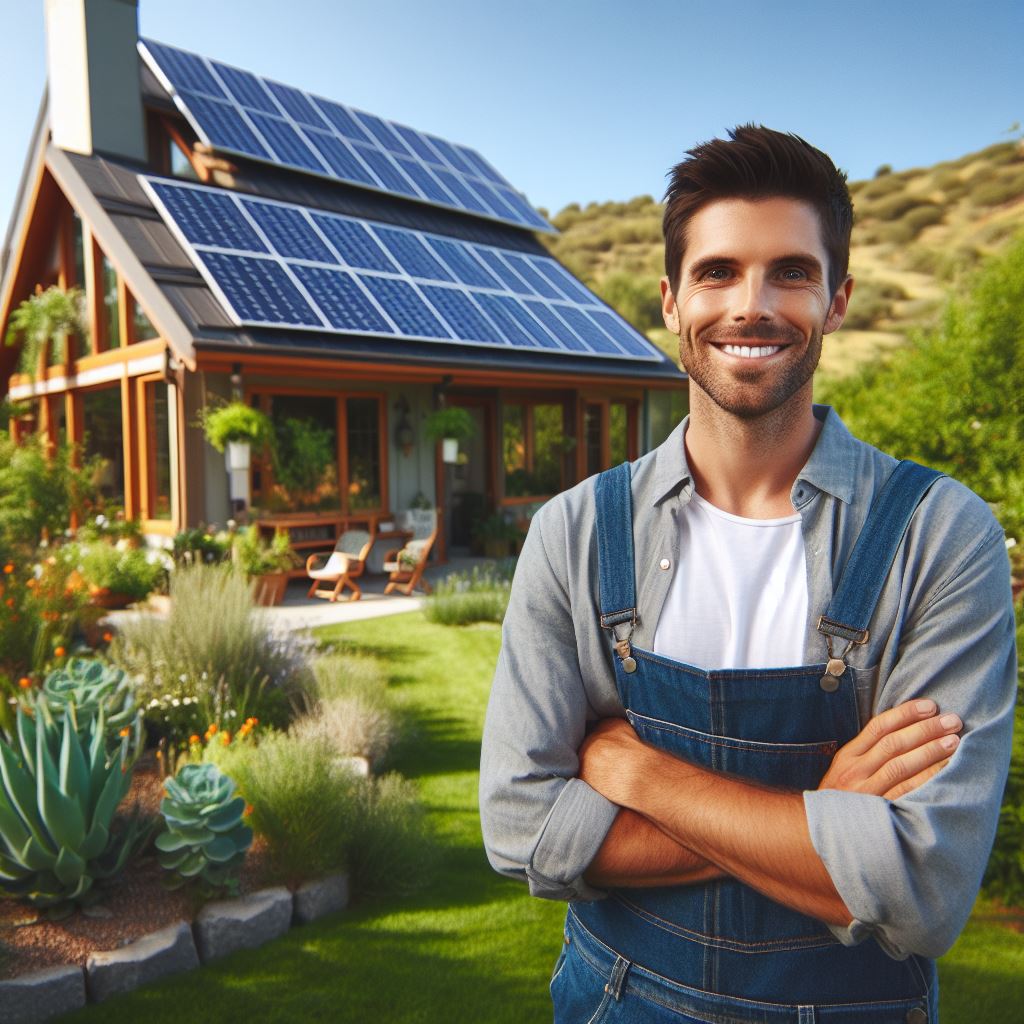Introduction
In this blog post, we will explore Sustainable Homes Cost vs Value. In the global push towards sustainability, homes play a pivotal role.
They are the crucible where eco-conscious decisions manifest, shaping not just the immediate environment but also influencing broader ecological trends.
Sustainable homes are not mere shelters; they are keystones of a greener, more resilient future.
By integrating renewable energy sources, optimizing resource usage, and employing eco-friendly materials and construction techniques, these homes stand as beacons of environmental responsibility.
They mitigate carbon footprints, reduce strain on natural resources, and promote a harmonious coexistence with nature.
However, the journey towards sustainability is not devoid of challenges.
Initial costs often deter homeowners from embracing green technologies, leading to a perceived trade-off between affordability and environmental stewardship.
This dichotomy between cost and value forms the crux of our exploration.
Beyond the financial aspect, sustainable homes offer intangible benefits that enrich lives and communities.
They provide healthier living environments, fostering well-being and productivity.
Moreover, they future-proof against escalating energy prices and regulatory changes, safeguarding investments in the long run.
Our endeavor is to dissect this intricate balance, unraveling the myths surrounding sustainable living and highlighting the tangible returns it offers.
Through empirical analysis and real-world examples, we aim to elucidate the true cost-effectiveness of sustainable homes.
By the end of this journey, we hope to empower readers with the knowledge and insights necessary to make informed decisions about their homes and contribute to a more sustainable world.
Definition of sustainable homes
Sustainable homes are becoming increasingly popular as people recognize the importance of preserving the Earth for future generations.
These homes are designed and built with the environment in mind, focusing on energy efficiency, the use of renewable materials, and reducing carbon footprints.
Energy efficiency
Energy efficiency is a crucial aspect of sustainable homes.
These homes are designed to maximize energy conservation, using methods such as proper insulation, energy-efficient appliances, and smart technologies.
By minimizing energy consumption, homeowners can significantly reduce their utility costs and contribute to a greener environment.
Use of renewable materials
Another key element of sustainable homes is the use of renewable materials.
Unlike traditional homes that use scarce and non-renewable resources, sustainable homes opt for eco-friendly alternatives.
Bamboo flooring, for example, is a popular choice due to its fast growth and sustainable harvesting practices.
Similarly, reclaimed wood salvaged from old structures adds character to sustainable homes while reducing deforestation.
Reduced carbon footprint
Reducing carbon footprints is a paramount goal of sustainable homes. These homes incorporate various strategies to minimize carbon emissions.
Energy-efficient lighting, such as LED bulbs, consumes less electricity and lasts longer, resulting in fewer carbon emissions.
Additionally, sustainable homes often feature solar panels that generate clean and renewable energy, further decreasing dependence on fossil fuels.
Other benefits of sustainable homes
The benefits of sustainable homes extend beyond environmental consciousness. Investing in a sustainable home can have substantial financial advantages.
Although the initial costs may be higher, the long-term savings on energy bills are significant.
Energy-efficient features, such as insulated windows and efficient HVAC systems, ensure lower energy consumption and reduced costs over time.
Moreover, sustainable homes are designed to promote healthier living environments.
They prioritize indoor air quality by using non-toxic, low-VOC paints, and materials.
Enhanced ventilation systems minimize the presence of allergens, improving the overall well-being of occupants.
Such homes also encourage the use of natural light, contributing to better mental health.
The demand for sustainable homes continues to rise as more people recognize their value.
Homeowners benefit from reduced energy bills, improved comfort, and the satisfaction of knowing they are contributing to a sustainable future.
Moreover, sustainable homes often have higher resale values as the market increasingly values eco-friendly and energy-efficient features.
In fact, sustainable homes encompass energy efficiency, the use of renewable materials, and minimizing carbon footprints.
They provide an eco-friendly alternative to traditional homes, offering financial savings, improved health, and a reduced impact on the environment.
As society becomes more aware of the need for sustainability, the popularity of sustainable homes will undoubtedly continue to grow.
Read: Green Building: What’s New in the US?
The cost of sustainable homes
Higher initial cost
Sustainable homes may have a higher initial cost compared to traditional homes, mainly due to the incorporation of eco-friendly materials and technologies.
These materials and technologies, such as solar panels and energy-efficient appliances, are more expensive to acquire and install.
Additionally, sustainable homes often require specialized architects and contractors who are knowledgeable about green building practices, which can contribute to higher costs.
However, it is important to consider the long-term benefits and value that sustainable homes provide.
Long-term savings on energy bills
One significant advantage of sustainable homes is the long-term savings on energy bills.
By utilizing renewable energy sources like solar power, homeowners can significantly reduce their reliance on traditional energy sources.
Solar panels can generate electricity, decreasing the need to purchase electricity from the grid, thereby leading to lower energy bills.
Furthermore, sustainable homes are designed to be energy-efficient, with features like better insulation, high-performance windows, and efficient appliances.
These elements minimize energy consumption, resulting in lower heating, cooling, and overall energy costs in the long run.
Return on investment (ROI)
Investing in a sustainable home can yield a significant return on investment (ROI) over time.
While the initial cost may be higher, homeowners can recoup their investment through various means.
Firstly, energy savings can accumulate over the years, leading to substantial savings on utility bills.
The money saved on energy costs can be reinvested into other aspects of homeownership or put towards other financial goals.
Secondly, sustainable homes have a higher resale value in the real estate market.
As the demand for eco-friendly living increases, properties that are designed with sustainable features become more desirable.
This increased demand can translate into higher home values, allowing homeowners to sell their sustainable homes at a premium price.
Moreover, sustainable homes are built to last and require less maintenance compared to traditional homes.
This durability further adds to the overall value of the property and can result in long-term financial benefits.
In short, while sustainable homes may have a higher initial cost, they offer numerous advantages and long-term benefits.
Higher initial costs can be justified by the long-term savings on energy bills and the potential return on investment.
Sustainable homes not only contribute to a greener environment but also provide homeowners with financial incentives.
With the increasing focus on sustainability and energy efficiency, investing in a sustainable home is a wise decision for both the present and the future.
Read: Eco Homes in 2024: Trends and Outlook
Factors influencing the cost of sustainable homes
A sustainable home’s cost is influenced by various factors such as location and climate, size and design, quality of eco-friendly materials, and certification and standards.
Location and climate
- The location of a sustainable home plays a vital role in determining its cost.
- Certain areas with a high demand for sustainable homes tend to have higher prices.
- The climate also affects the cost, as homes located in extreme climates may require additional insulation or unique energy-efficient features.
- Regions with ample renewable energy resources may offer incentives or subsidies for sustainable home construction.
Size and design
- The size and design of a sustainable home significantly impact its cost.
- A larger home typically requires more eco-friendly materials, resulting in higher construction and maintenance expenses.
- Complex architectural designs and unique features can also add to the overall cost.
- Optimizing the home’s layout and incorporating energy-efficient design principles can help reduce costs in the long run.
Quality of eco-friendly materials
- The quality of eco-friendly materials used in the construction of a sustainable home affects its cost.
- Higher-quality materials often come at a premium price, but they offer better durability and energy efficiency.
- Investing in sustainable materials with certifications, such as Energy Star or LEED, increases the cost but ensures long-term savings.
- Using locally sourced materials can help reduce transportation costs and support the local economy.
Certification and standards
- The certification and standards that a sustainable home meets can impact its cost.
- Homes complying with recognized certifications, such as LEED or Passivhaus, may have higher upfront costs.
- However, certified homes offer assurance of energy efficiency, indoor air quality, and a reduced environmental impact.
- Meeting building codes and regulations for sustainable construction may also add to the overall cost.
In general, various factors influence the cost of sustainable homes. Location, climate, size, design, eco-friendly materials, and certifications all play significant roles.
It is important for homeowners to consider these factors when planning to build a sustainable home, as they can impact both the initial investment and long-term savings.
Read: The US Market & Climate-Ready Homes
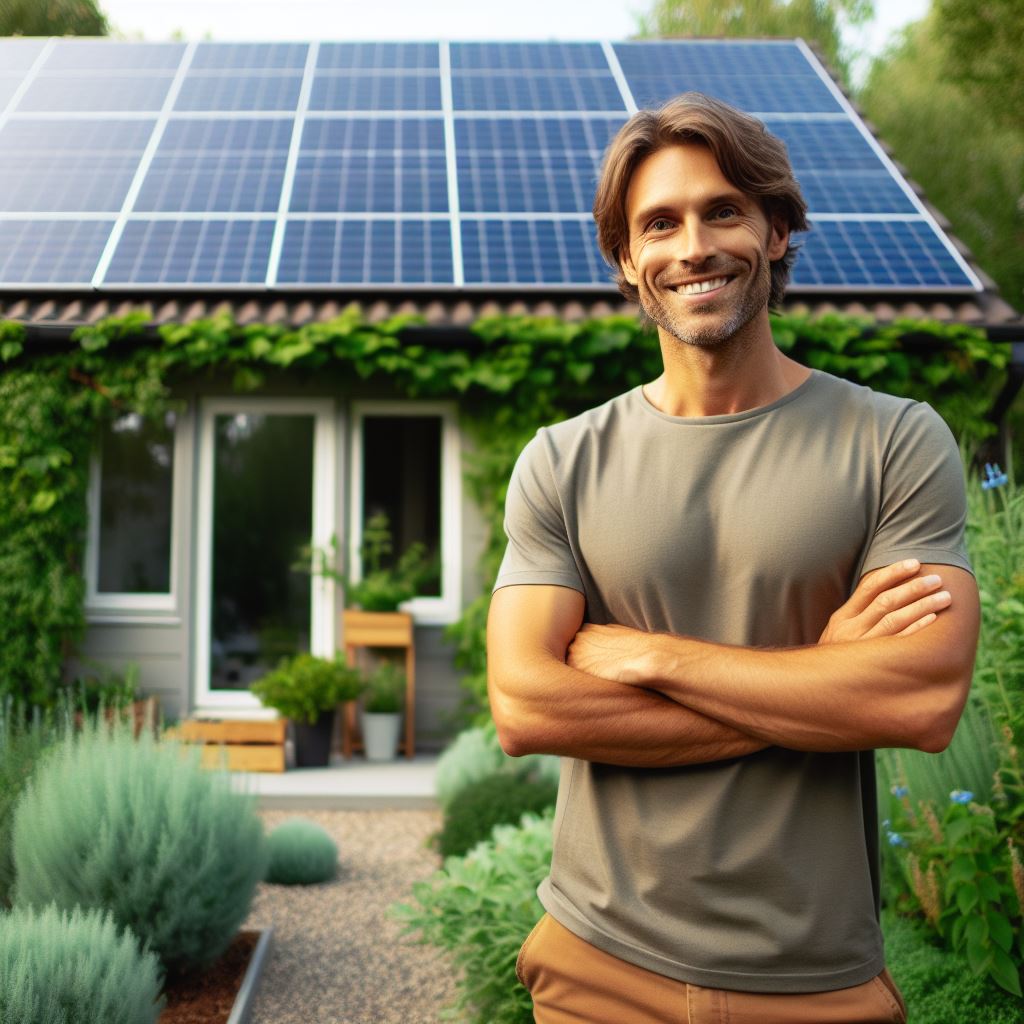
Benefits of sustainable homes
Living in a sustainable home positively impacts the health and well-being of its occupants.
Cleaner indoor air quality, free from harmful pollutants, leads to better respiratory health.
Sustainability also contributes to a more comfortable and enjoyable living experience.
Environmental benefits
Investing in a sustainable home not only serves as an environmentally responsible choice but also offers a multitude of benefits for homeowners.
From reducing greenhouse gas emissions and conserving natural resources to experiencing energy savings and improved indoor air quality, these advantages make sustainable homes a cost-effective and valuable investment.
One of the primary environmental benefits of sustainable homes is their ability to reduce greenhouse gas emissions.
Through the incorporation of energy-efficient systems and renewable energy sources such as solar panels, sustainable homes minimize their carbon footprint.
In addition to reducing greenhouse gas emissions, sustainable homes also promote the conservation of natural resources.
By utilizing sustainable materials and practicing efficient water management, these homes play a crucial role in preserving our planet’s resources for future generations.
Economic benefits
Turning to the economic benefits, sustainable homes offer substantial energy savings.
Through the installation of energy-efficient appliances, insulation, and advanced technologies, homeowners can significantly decrease their energy consumption, resulting in lower utility bills.
Furthermore, sustainable homes enjoy increased property value. As more people prioritize sustainability and energy efficiency, the demand for such homes rises.
This increased demand drives up the value of sustainable homes, providing a lucrative return on investment for homeowners.
Health and well-being benefits
Aside from the environmental and economic advantages, sustainable homes also promote health and well-being.
Improved indoor air quality, achieved through proper ventilation and non-toxic materials, reduces the risk of respiratory diseases and enhances overall health.
Living in a sustainable home also enhances comfort and the overall living experience.
From natural light optimization to efficient temperature control, sustainable homes prioritize the well-being of their occupants, ensuring a pleasant and comfortable living environment.
In review, the benefits of sustainable homes are vast and significant.
Environmental advantages, including reduced greenhouse gas emissions and conservation of natural resources, contribute to a healthier planet.
Economic benefits, such as energy savings and increased property value, offer financial advantages to homeowners.
Additionally, improved indoor air quality and enhanced comfort further contribute to the well-being and quality of life for those living in sustainable homes.
Investing in a sustainable home not only aligns with environmentally conscious values but also provides long-term cost-saving benefits and improved living conditions.
Read: Aging in Place: US Construction Trends
Evaluating the Value of Sustainable Homes
Sustainable homes have become increasingly popular in recent years due to their positive impact on the environment and potential cost savings.
However, evaluating the value of these homes can be a complex process.
This section explores the different methods and considerations involved in assessing the value of sustainable homes.
Certification Programs and Labels
One way to determine the value of a sustainable home is by looking at certification programs and labels.
These programs, such as LEED (Leadership in Energy and Environmental Design) or ENERGY STAR, provide a standardized framework for evaluating a home’s sustainability.
- LEED certification, for example, assesses factors such as energy efficiency, water usage, indoor air quality, and materials used in construction.
- ENERGY STAR label focuses mainly on energy efficiency and identifies homes that meet strict energy performance guidelines.
These certifications and labels provide tangible proof of a home’s sustainability, which can increase its value in the real estate market.
Real Estate Market Trends
The value of sustainable homes can also be influenced by real estate market trends.
As sustainability becomes a more prominent consideration for home buyers, the demand for eco-friendly homes increases.
- Green homes often have higher resale values due to the growing interest in sustainable living.
- Millennials, in particular, are driving the demand for sustainable homes as they prioritize environmentally-friendly features when purchasing a property.
Investing in sustainable features can, therefore, provide a competitive edge for sellers and potentially lead to higher selling prices.
Appraisal Considerations
Appraisals play a crucial role in determining the value of any home, including sustainable homes.
- Appraisers need to consider the added value that sustainable features bring to a property when conducting evaluations.
- Factors such as energy efficiency, durability, and reduced maintenance costs should be taken into account during the appraisal process.
It is important for appraisers to have a thorough understanding of sustainable features and their impact on a home’s value to accurately assess its worth.
In a nutshell, evaluating the value of sustainable homes involves considering certification programs and labels, real estate market trends, and appraisal considerations.
These factors contribute to the overall desirability and marketability of sustainable homes, making them an excellent investment for homeowners and a step towards a more sustainable future.
Case studies of sustainable home projects
Examples of successful sustainable homes
Project A: Smith Residence
The Smith Residence in XYZ city stands as a shining example of a successful sustainable home project.
This home was designed with energy-efficient features such as solar panels and a rainwater harvesting system.
The Smiths’ sustainable home not only reduces their carbon footprint but also saves them money on utility bills.
The use of eco-friendly materials and efficient insulation ensures optimal temperature control and minimal waste.
Project B: Johnson House
Another noteworthy example is the Johnson House, built with a focus on sustainable design principles.
This home incorporates passive cooling techniques such as cross-ventilation and shading devices to reduce the need for air conditioning.
Additionally, the Johnson House uses low-flow fixtures and a greywater recycling system, significantly reducing water consumption.
The homeowners enjoy a comfortable living environment while also contributing to a greener future.
Financial and environmental outcomes
Cost Savings
Sustainable homes have proven to offer significant financial benefits to homeowners.
Lower utility bills are a direct result of energy-efficient features such as solar panels and energy-saving appliances.
The initial investment in sustainable technologies is often recouped through long-term cost savings in the form of reduced energy and water bills.
Environmental Impact
Sustainable homes play a vital role in reducing our carbon footprint and preserving natural resources.
By using renewable energy sources such as solar power, these homes greatly reduce greenhouse gas emissions.
Efficient water management systems, like rainwater harvesting and greywater recycling, help preserve freshwater resources.
Sustainability in Construction
Sustainable home projects also contribute to the development of eco-friendly construction practices.
These projects promote the use of recycled materials, which reduces the demand for new resources and minimizes waste.
Furthermore, sustainable design principles encourage the use of energy-efficient insulation and ventilation systems.
Overall, sustainable homes demonstrate that it is possible to create environmentally responsible living spaces that enhance the quality of life.
Basically, case studies of successful sustainable home projects showcase the immense value and benefits they offer.
The Smith Residence and Johnson House exemplify how careful consideration of sustainable design principles can create comfortable and eco-friendly living spaces.
These homes not only save homeowners money but also significantly reduce their environmental impact.
With cost savings, environmental benefits, and the promotion of sustainable construction practices, it is clear that investing in sustainable homes is a wise choice for both individuals and the planet.
Conclusion
Sustainable homes offer numerous benefits, both in terms of cost savings and increased property value.
By implementing energy-efficient systems and using sustainable materials, homeowners can lower their utility bills and enhance their home’s worth.
Choosing a sustainable home is not only a wise financial decision but also a responsible choice for the environment.
By prioritizing energy efficiency and reducing carbon footprint, individuals can contribute to a healthier planet and inspire others to follow suit.
In the future, sustainable homes will continue to evolve and advance as technology improves.
Innovations such as renewable energy systems, smart home automation, and eco-friendly construction materials will further enhance the cost-effectiveness and value of sustainable homes.
By embracing sustainable living, homeowners can not only save money but also make a positive impact on the planet and inspire a greener future.

